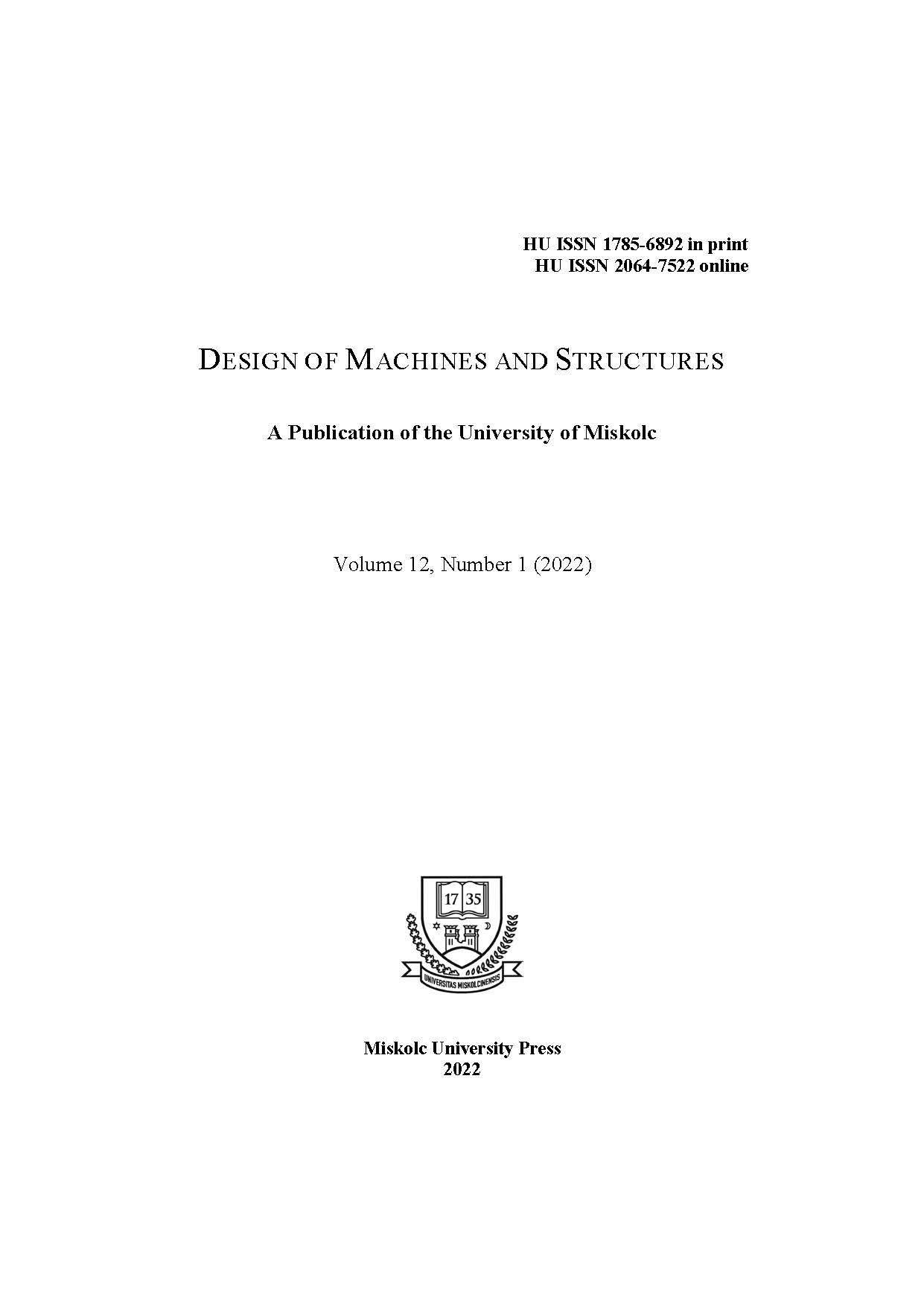Using numerical simulation to investigate the effect of layer thickness on residual stress and warping of specimens made of ABS
DOI:
https://doi.org/10.32972/dms.2022.001Keywords:
Additive Manufacturing, ABS, Residual stress, Warping deformation, Digimat-AMAbstract
Fused Filament Fabrication (FFF) is an additive manufacturing technology that is used to create a wide range of parts and applications. Along with its benefits, there are some challenges regarding the printed parts’ mechanical properties, which are associated with printing parameters like layer thickness, infill density, print speed, and nozzle temperature. Experimentally investigation of these pamperers is costly and time-consuming. Some simulations are available to use the numerical solution in the investigation. This work used Digimat-AM simulation to investigate the effect of layer thickness on the residual stress and warping deformation of printed ABS parts.
References
Alaimo, G. – Marconi, S. – Costato, L. – Auricchio, F. (2017). Influence of meso-structure and chemical composition on FDM 3D-printed parts. Composites Part B: Engineering, Vol. 113, March, pp. 371–380. https://doi.org/10.1016/j.compositesb.2017.01.019
Conway, K. M. – Pataky, G. J. (2019). Crazing in additively manufactured acrylonitrile butadiene styrene. Engineering Fracture Mechanics, Vol. 211, Apr., pp. 114–124, https://doi.org/10.1016/j.engfracmech.2019.02.020.
Disruptive technologies: Advances that will transform life, business, and the global economy. McKinsey, https://www.mckinsey.com/business-functions/mckinsey-digital/our-insights/disruptive-technologies# (accessed Feb. 22, 2022).
Ficzere, P. (2022). The Impact of the Positioning of Parts on the Variable Production Costs in the Case of Additive Manufacturing. Periodica Polytechnica Transportation Engineering, Feb., https://doi.org/10.3311/PPtr.15827.
Alsardia, T. – Lovas, L. – Ficzere, P. (2021). Prototype for fit investigations. Design of Machines and Structures, Vol. 11, No. 1, pp. 5–15. https://doi.org/10.32972/dms.2021.001
Ficzere, P. – Lukács, N. L. (2020). The possibilities of intelligent manufacturing methods. Design of Machines and Structures, Vol. 10, No. 1, pp. 13–19. https://doi.org/10.32972/dms.2020.002
Rashid, A. (2019). Additive Manufacturing Technologies. CIRP Encyclopedia of Production Engineering, pp. 1–9. https://doi.org/10.1007/978-3-642-35950-7_16866-1
Ding, S. – Zou, B. – Wang, P. Ding, H. (2019). Effects of nozzle temperature and building orientation on mechanical properties and microstructure of PEEK and PEI printed by 3D-FDM. Polymer Testing, Vol. 78, Sept. p. 105948. https://doi.org/10.1016/j.polymertesting.2019.105948
Wankhede, V. – Jagetiya, D. – Joshi, A. – Chaudhari, R. (2020). Experimental investigation of FDM process parameters using Taguchi analysis. Materials Today: Proceedings, Vol. 27, Jan., pp. 2117–2120. https://doi.org/10.1016/j.matpr.2019.09.078
Yao, T. – Deng, Z. – Zhang, K. – Li, S. (2019). A method to predict the ultimate tensile strength of 3D printing polylactic acid (PLA) materials with different printing orientations. Composites Part B: Engineering, Vol. 163, Apr., pp. 393–402, https://doi.org/10.1016/j.compositesb.2019.01.025.
Markiz, N. – Horváth, E. – Ficzere, P. (2020). Influence of printing direction on 3D printed ABS specimens. Production Engineering Archives, Vol. 26, No. 3, Sept., pp. 127–130, https://doi.org/10.30657/PEA.2020.26.24.
Mohamed, O. A. – Masood, S. H. – Bhowmik, J. L. (2016). Optimization of fused deposition modeling process parameters for dimensional accuracy using I-optimality criterion,” Measurement, vol. 81, pp. 174–196, Mar. 2016. https://doi.org/10.1016/j.measurement.2015.12.011.
Raut, S. – Jatti, V. S. – Khedkar, N. K. – Singh, T. P. (2014). Investigation of the Effect of Built Orientation on Mechanical Properties and Total Cost of FDM Parts. Procedia Materials Science, Vol. 6, Jan., pp. 1625–1630. https://doi.org/10.1016/j.mspro.2014.07.146.
Costa, S. F. – Duarte, F. M. – Covas, J. A. (2017). Estimation of filament temperature and adhesion development in fused deposition techniques. Journal of Materials Processing Technology, Vol. 245, July, pp. 167–179. https://doi.org/10.1016/j.jmatprotec.2017.02.026.
Quelho de Macedo, R. – Ferreira, R. T. L. – Jayachandran, K. (2019). Determination of mechanical properties of FFF 3D printed material by assessing void volume fraction, cooling rate and residual thermal stresses. Rapid Prototyping Journal, Vol. 25, No. 10, Nov., pp. 1661–1683. https://doi.org/10.1108/RPJ-08-2018-0192/full/pdf.
Alhafadhi, M. – Krállics, G. (2020). Effect of the welding parameters on residual stresses in pipe weld using numerical simulation. Design of Machines and Structures, Vol. 10, No. 1, pp. 5–12, https://doi.org/10.32972/dms.2020.001.
Savane, V. – Hansen, C. (2017). Finite Element Simulation of the Fused Deposition Modelling Process Composites simulation View project Multi-scale Material Modeling View project. Online. Available: https://www.researchgate.net/publication/313819691.
Hebert, P. – Lietaer, O. (2017). New developments in simulation for plastics & metals: Multiscale Modeling of AM Process of Plastics & Composites. MSC Software Magazine, pp. 12–16. [Online]. Available: www.mscsoftware.com/event4.

